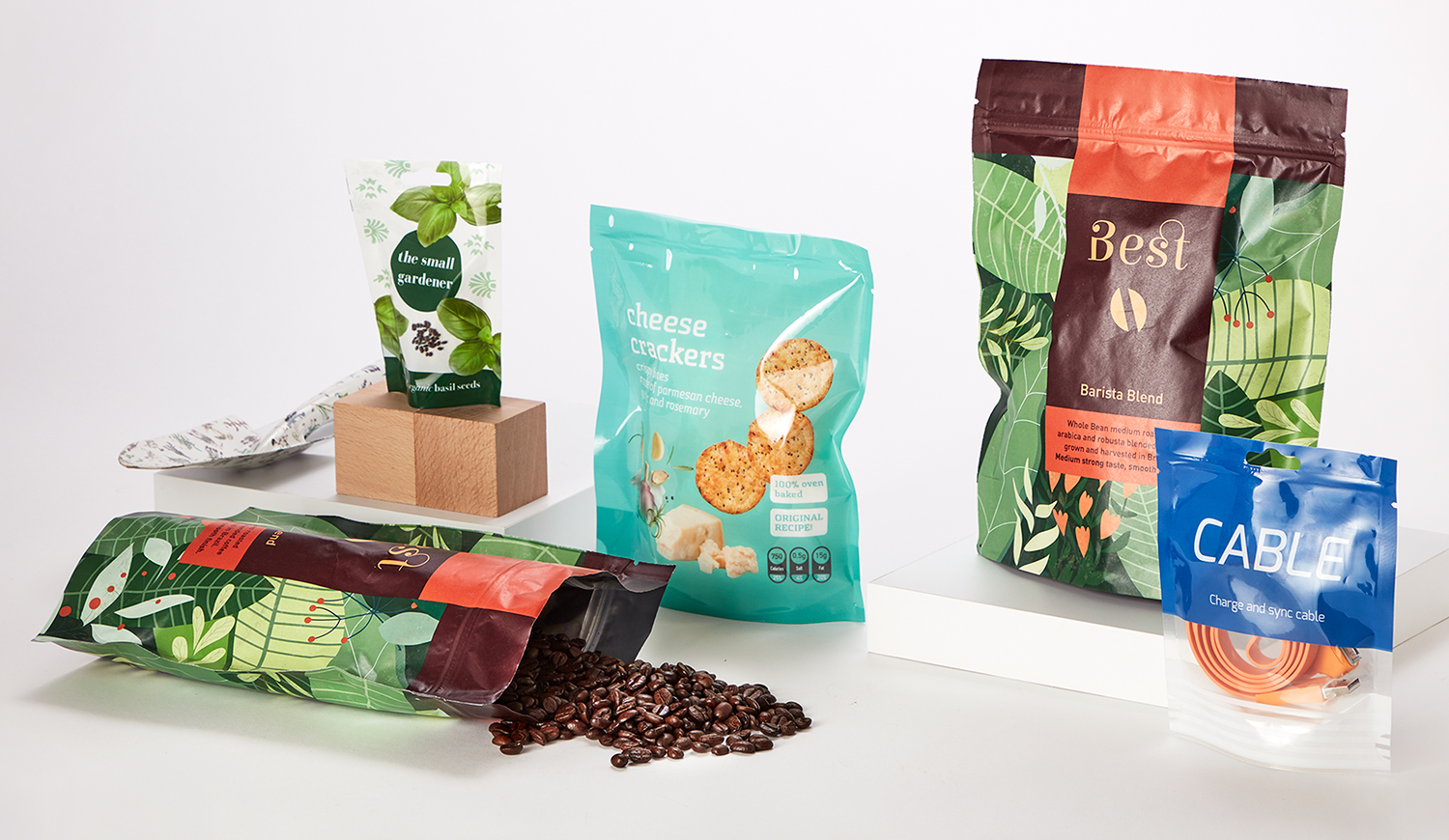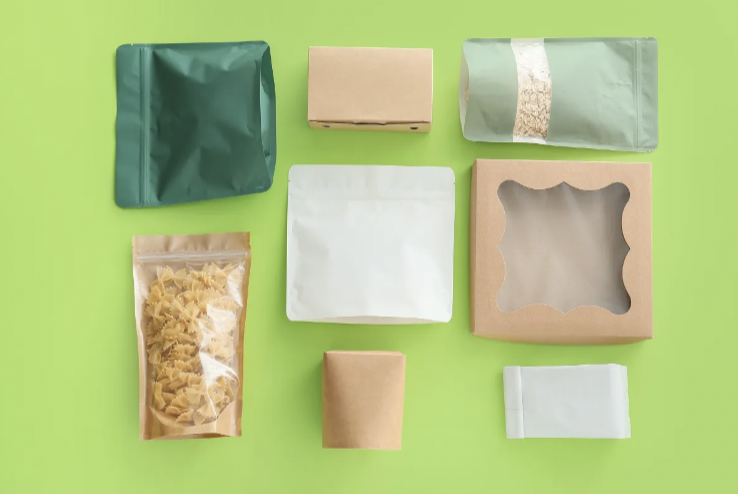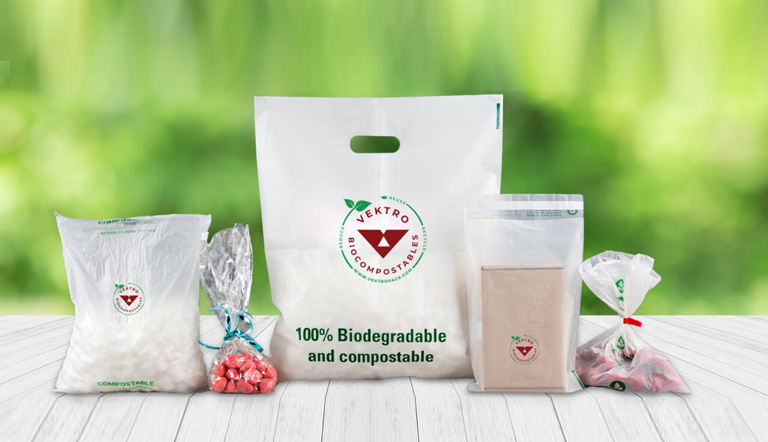Flexible packaging has become an indispensable part of modern life, keeping our food fresh, our cosmetics safe, and a myriad of other products secure. But have you ever stopped to think about what makes up this versatile packaging? This article dives deep into the world of plastic raw materials, the foundational components of the flexible packaging industry. Understanding these materials is key to appreciating the innovation, sustainability, and functionality that define today’s packaging solutions. Whether you’re a business owner like Mark Thompson looking for the best packaging material or simply curious about the plastic around you, this guide will illuminate the essential elements that make flexible packaging so effective.
What Exactly is Flexible Packaging Made From, and Why is Plastic So Important?
When you pick up a bag of chips or a cosmetic sample, chances are it’s encased in flexible packaging. Unlike rigid containers, flexible packages can change shape, making them incredibly adaptable. But what’s the secret ingredient? The answer often lies in plastic.
Plastic materials are central to flexible packaging is made because of their remarkable versatility. Think about it: plastic can be thin and pliable like the wrap on a candy bar, or thicker and more durable for containing liquids. This versatility stems from the diverse types of plastic available, each with unique physical properties. For instance, some plastic offers excellent moisture barrier, crucial for food packaging, while others provide strength and puncture resistance. Without plastic, many of the conveniences we rely on in our products and packaging simply wouldn’t be possible.
| Feature | Benefit for Flexible Packaging |
|---|---|
| Lightweight | Reduces transportation costs and environmental impact. |
| Barrier Properties | Protects contents from moisture, oxygen, and other contaminants. |
| Versatility | Can be formed into various shapes and sizes. |
| Cost-Effective | Generally less expensive than alternative packaging materials like glass or metal. |
| Printability | Allows for attractive branding and product information. |
What Type of Plastic is Commonly Used in Flexible Packaging, and What are Their Unique Strengths?
The world of plastic is vast, and several type of plastic play key roles in flexible packaging. Let’s look at some of the most common:
- Polyethylene (PE): This is a workhorse in the flexible packaging industry, known for its excellent sealability and flexibility. You’ll find polyethylene in everything from plastic bags to the inner liner of some pouches. There are different densities of polyethylene, with high density options offering more strength. Think of the thin carrier bags you get at the store – often made of high density polyethylene.
- Polypropylene (PP): Stronger and more heat-resistant than polyethylene, polypropylene is often used to preserve freshness in food packaging. It can also be biaxially stretched (BOPP) to enhance its strength and clarity, making it ideal for snack food wrap.
- Polyester (PET): Known for its high tensile strength and clarity, polyester film is often used as an outer layer in laminate structures, providing stiffness and a good surface for printing process.
- Aluminum Foil: While not a plastic itself, aluminum foil is frequently used in flexible packaging as a barrier layer, offering exceptional protection against light, oxygen, and moisture. You’ll find it in pouches for coffee and other sensitive products.
These different materials are often combined in multi-layer structures to leverage their individual strengths, creating flexible packaging materials that are both protective and functional.
How Does the Manufacturing Process Turn Plastic Raw Material into Functional Flexible Packages?
The journey from plastic raw material to a finished pouch involves several key steps in the manufacturing process:
- Extrusion: This is where the plastic pellets are melted and formed into a continuous plastic film. Two common methods are blown film, where a bubble of plastic is inflated and then collapsed, and film extrusion, where the molten plastic is pushed through a die.
- Printing: If the packaging products need branding or information, they go through a printing process. Common techniques include rotogravure and flexographic printing process, which allow for high-quality images and text on the plastic film. Allen, from Guangdong, China, at his factory specializes in these advanced printing techniques.
- Lamination: Often, multiple layers of plastic film, aluminum foil, or paper are bonded together using adhesives in a process called lamination. This creates a multi-layer structure with enhanced barrier properties and strength. Think of a chip bag – it’s usually a laminate of several plastic films and sometimes aluminum foil.
- Pouch Making: The printed and laminated film is then fed into machines that cut and seal the material to form the final pouch shape. Different sealing techniques are used depending on the type of packaging, such as heat sealing for creating strong, airtight seals. Various pouch styles, like Flat Bottom Pouch, Back-Sealed Pouch Bags, and Three-Side Seal Pouch, are created during this stage.
This intricate manufacturing process transforms basic plastic raw material into the sophisticated flexible packages we see on store shelves.

What Role Does Lamination Play in Enhancing Plastic Packaging Performance?
Lamination is a critical step in the creation of high-performance plastic packaging. By bonding together two or more layers of different materials, lamination creates a synergistic effect, resulting in flexible packaging is used that is far superior to packaging without this process.
Here’s how lamination enhances performance:
- Improved Barrier Properties: Combining materials like polyethylene with aluminum foil or polyester creates a structure with excellent barrier properties against moisture, oxygen, and light. This is especially important for packing food and other sensitive products and packaging.
- Increased Strength and Durability: Laminated structures are generally stronger and more resistant to tearing and punctures than single-layer films. This ensures the product packaging remains intact during shipment and handling.
- Enhanced Printability: The outer layer of a laminate can be chosen specifically for its printability, allowing for vibrant and high-quality graphics that enhance brand appeal.
- Specialized Functionality: Lamination allows for the incorporation of layers with specific functions, such as sealants for creating airtight seals or layers with improved heat resistance for vacuum packaging.
By carefully selecting the material type for each layer, manufacturers can refine the plastic packaging to make it suitable for a wide range of packaging applications.
Consider exploring our range of Film Wrapping Hand-Hole Pouch Bag options, which often benefit significantly from lamination to enhance their strength and print quality.
Why is Plastic Film Often the Material Used for Food Packaging?
When it comes to food packaging, plastic film is a dominant choice, and for good reason. Its popularity stems from a combination of factors that directly address the needs of the food industry:
- Barrier Protection: As mentioned earlier, plastic film can be engineered to provide excellent barriers against oxygen, moisture, and other elements that can cause fresh food to spoil. This extends shelf life and reduces food waste.
- Food Safety: Many plastic materials used in food packaging meet stringent food safety standards, ensuring they don’t contaminate the food they contain. This is a key concern when purchasing plastic for packaging.
- Cost-Effectiveness: Compared to alternatives like glass or metal, plastic film is generally more cost-effective to produce and transport, helping to keep food packaging affordable.
- Versatility in Form: Plastic film can be easily formed into various types of packaging, from simple wraps to complex stand-up pouches. Consider our selection of Popular China Eco Friendly Packaging Nozzle Pouch Bags designed for convenient food dispensing.
- Lightweight: The lightweight nature of plastic film reduces transportation costs and the overall environmental footprint of packaging production.
While concerns about plastic waste are valid, ongoing innovation in the flexible packaging industry is leading to more sustainable plastic film options, including recyclable and biodegradable plastics.

How is the Flexible Packaging Industry Embracing Sustainability and the Circular Economy for Plastic?
The flexible packaging industry recognizes the importance of sustainability and is actively working towards a circular economy for plastic. This means moving away from a linear "take-make-dispose" model towards one where plastic is kept in use for as long as possible.
Here are some key initiatives:
- Developing Recyclable Packaging: Significant efforts are focused on designing flexible plastic packaging that is easier to recycle. This often involves using single material structures or materials that are compatible in the recycle stream.
- Utilizing Recycled Content: Many manufacturers are incorporating post-consumer recycled plastic back into new packaging products, reducing the reliance on virgin raw material.
- Exploring Bioplastics and Compostable Materials: Bioplastics, plastic derived from renewable resources, and compostable plastic that can break down in industrial composting facilities are gaining traction as environmentally conscious alternatives. Our range of All Natural Packaging Gusseted Pouch Bag options reflects this growing trend.
- Reducing Packaging Waste: Innovation in flexible packaging solutions is also focused on minimizing the amount of material used while maintaining performance. This includes down-gauging (making films thinner) and optimizing package design.
- Promoting Recycling Infrastructure: The industry is collaborating to improve recycleing infrastructure and educate consumers on how to properly recycle flexible packages.
Allen and his factory in Guangdong are committed to offering sustainable solutions, recognizing the increasing demand for packaging without a negative environmental impact.
What Innovative Types of Flexible and Bioplastics are Emerging in the Packaging Market?
The quest for more sustainable packaging material is driving innovation in the development of new types of flexible and bioplastics. These offer promising alternatives to traditional plastic derived from crude oil.
- Plant-Based Plastics (Bioplastics): These bioplastics are made from one or more renewable resources, such as corn starch, sugarcane, or cellulose. Examples include PLA (polylactic acid) and PHA (polyhydroxyalkanoate). They can often be composted, offering an end-of-life solution that reduces landfill waste. Consider our selection of Green Beauty Packaging Insert Pouch Bags, often made with innovative bioplastics.
- Recycled Plastics: Advancements in recycleing technology are improving the quality and availability of post-consumer recycled resins (PCR). Using PCR reduces the need for virgin plastic and lowers the carbon footprint of packaging production.
- Biodegradable Plastics: These plastic products are designed to break down naturally through the action of microorganisms. While promising, it’s especially important to understand the conditions required for biodegradation, as not all biodegradable plastic will break down in a typical home compost.
The emergence of these innovative plastic materials signals a shift towards a more sustainable flexible packaging industry.

How Can Understanding Plastic Raw Material Help Businesses Choose the Right Flexible Packaging Solutions?
For businesses like Mark Thompson’s, a solid understanding of plastic raw material is invaluable when selecting flexible packaging solutions. Knowing the properties of different materials allows for informed decisions that can impact product protection, shelf appeal, and sustainability goals.
Here’s how this knowledge helps:
- Optimizing Product Protection: Understanding barrier properties helps businesses choose the right plastic film or laminate structure to protect their products and packaging from moisture, oxygen, and other contaminants, ensuring product quality and extending shelf life.
- Achieving Desired Aesthetics: The material type affects the look and feel of the packaging. For instance, polyester offers a glossy finish, while other plastic might have a matte or soft-touch feel. This is crucial for cosmetic and personal care brands where visual appeal is paramount. Explore our Soft Touch Pack Flat Pouch options for a premium feel.
- Meeting Sustainability Targets: Businesses committed to sustainability can leverage their knowledge of recyclable, compostable, and bio-based plastic to select more environmentally conscious packaging material.
- Controlling Costs: Different plastic materials have different price points. Understanding these differences allows businesses to balance performance requirements with budget considerations.
- Ensuring Compliance: For food packaging and other regulated industries, knowing the food safety certifications and compliance standards associated with different materials is essential.
By understanding the nuances of plastic raw material, businesses can make strategic packaging choices that benefit their products, their brand, and the environment.
Are There Recyclable Options for Flexible Plastic Packaging, and How Does Recycle Work?
While recycleing flexible plastic packaging can be more complex than recycleing rigid containers, progress is being made. Yes, there are increasingly recyclable options available, and understanding the recycle process is key to making informed choices.
Here’s a simplified overview of how recycle works for plastic:
- Collection: Flexible plastic packaging needs to be collected separately or through designated drop-off programs, as it often requires different processing than rigid plastic.
- Sorting: The collected plastic is sorted by material type. This is crucial because different types of plastic have different melting points and chemical compositions.
- Processing: The sorted plastic is cleaned, shredded, and melted down.
- Reprocessing: The molten plastic is then formed into new plastic products. This could be anything from new packaging to park benches or even clothing fibers.
The key to improving the recycleability of flexible packaging lies in design for recycleability. This often means using single material structures (making a pouch entirely from polyethylene, for example) rather than complex laminates that are difficult to separate. We encourage you to contact us to discuss our Recycleable Popular Flexible Packaging Irregular Shape Pouch options.
Looking to the Future: What Innovations are on the Horizon for Plastic Materials in Flexible Packaging?
The future of plastic materials in flexible packaging is bright, with ongoing research and development pushing the boundaries of what’s possible. Expect to see even more advancements in areas like:
- Advanced Recycling Technologies: Chemical recycleing, also known as advanced recycleing, breaks down plastic polymers into their building blocks, allowing for the creation of virgin-quality plastic from recycled materials, even for complex laminates.
- Enhanced Barrier Properties with Less Material: Nanotechnology and other innovations are enabling the creation of plastic films with superior barrier properties, even at thinner gauges, further reducing material used.
- Smart Packaging: Integrating sensors and other technologies into flexible packaging to monitor freshness, temperature, and other factors is an emerging trend that can improve food safety and reduce waste.
- Bio-based and Biodegradable Innovations: Expect to see new and improved bioplastics with enhanced performance and broader applicability, as well as biodegradable plastic that can break down safely in various environments.
These innovations promise a future where flexible packaging is not only functional and cost-effective but also increasingly sustainable. The optimisation of one material solutions and the development of truly circular systems are key to this evolution.
In Conclusion:
Understanding the plastic raw material that forms the foundation of the flexible packaging industry is crucial for businesses and consumers alike. From the versatility of polyethylene to the barrier properties of aluminum foil and the promise of bioplastics, these materials play a vital role in protecting our products and shaping our world. As the industry continues to innovate, focusing on sustainability and the circular economy, we can look forward to even more advanced and environmentally responsible flexible packaging solutions.
Key Takeaways:
- Plastic is a primary raw material in flexible packaging due to its versatility and protective properties.
- Different types of plastic, like polyethylene, polypropylene, and polyester, offer unique benefits.
- Lamination enhances the performance of plastic packaging by combining different materials.
- The flexible packaging industry is actively pursuing sustainability through recycleing, bioplastics, and waste reduction.
- Understanding plastic raw material empowers businesses to make informed packaging choices.
If you’re looking for high-quality flexible packaging solutions, including options like Soft Services Packaging Accordion Pouch Bags or Cosmetics Packaging Back-Sealed Pouch Bags, contact us today to discuss your specific needs. We offer a wide range of pouch styles, including the innovative China Plastik Packaging Envelope Pouch, the sleek Soft Touch Pack Flat Pouch, and the versatile Flat Bottom Pouch. For those prioritizing sustainability, explore our All Natural Packaging Gusseted Pouch Bag and Green Beauty Packaging Insert Pouch Bags. We also specialize in unique designs like the Popular Flexible Packaging Irregular Shape Pouch and the convenient Popular China Eco Friendly Packaging Nozzle Pouch Bags. Our expertise extends to practical solutions like the Film Wrapping Hand-Hole Pouch Bag and reliable options using Plastic For Packaging Three-Side Seal Pouch.
Post time: 01-08-2025

